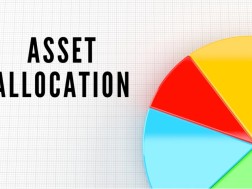The key to long term investment success is to invest rationally, not emotionally. To Re-balance the asset mix and family wealth and to allocate capital wisely and efficiently is often an art not always a science.
It is only a few months until the United States presidential election and the S&P 500 trades at 21.5X forward earnings, its exact level before FED chair Powell finally admitted the CPI was 9% and inflation was not transitory.
The U.S. Bond Yield Curve has been inverted for 20 months. That's the longest period in recorded U.S. history. The equity market is currently a reflation/risk-on regime, that is, a high-risk appetite regime, and it would not be reasonable to position in the opposite direction until this regime changes. Technically speaking, the tech-dominated Nasdaq 100 (NDX) continues to break record after record, but there has been an increase in stocks hitting monthly, quarterly and even annual lows, which is not very normal. The S&P500 technology sector is about 8 percent above the 20-day average and about 27 percent above the 200-day average.
Valuation is never a timing indicator, and often time in the market of a globally well diversified portfolio is more important than marketing timing.
A lot has been written about the concentration in the AI equity-related bull market of the USA, but to put it simply, investors who invest $1 into the S&P 500 index today are effectively allocating $0.28 into the top 5 stocks.
Amazon crossed $2 trillion in market cap during intraday trading this week, Mr. Bezos’s company joined other tech heavyweights such as Nvidia, Apple, Alphabet and Microsoft, all of which have crossed a $2 trillion market capitalization.
Many clients and investors are not always clear on their return requirements and capital market return assumptions. Neither whether RISK or Ruin are truly four-letter words.
Capital preservation, (2) the preservation of cash flows alongside that (dividend yield and growth), (3) diversification across asset classes and regions, (4 ) portfolio rebalancing (booking profits) when it makes sense are important when engaging with any financial advisor or asset management or wealth management company.
The basic math behind rational investment decisions never changes and never goes out of style, even if there is hype or bubbles on Wall Street and potentially dysfunctional politics in Washington.
According to some estimates, well over 70 per cent of the U.S. household sector’s financial assets are concentrated in the equity market (just 8 per cent are in bonds). Few have chosen to take profits or rebalance their portfolio in what is now among the top 10 per cent most expensive U.S. markets of all time, with a forward P/E multiple north of 21 times (whereas the “fair value” is closer to 16 times under the current 4 per cent to 5 per cent interest rate backdrop).
Active versus passive portfolio management has been an important debate on wall street and with clients over the years and it could potentially lead to a retirement crisis.
According to some estimates over half (53 per cent) of the U.S equity market today is owned by passive index funds.
In 2024 and with the S&P 500 over 5,000 index points and Nvidia at P/E 73x and 7% weighting in the broad market index weighting, we could be at a level where investors and stewards of capital should reflect on the active versus passive debate and also the stock bond relationship. The relationship between stocks and bonds is a crucial aspect of financial markets, influencing investment strategies, portfolio management, and economic policies.
In today’s market there is more money in passive index fund investments than in actively managed accounts. It is a new era, indeed: the necessity of doing research on individual company income statements and balance sheets no longer exists, when passive investment strategies and index hugging could have become the biggest bubble intense concentration in this market and passive investment strategies creating the risk of market dislocation is a real risk
Index funds have come to dominate the composition of most retirement accounts – ETFs now make up 23 per cent of self-directed assets, for example, nearly doubling in the past decade. And what is even more problematic is that when the inevitable turn comes, is that these passive index funds are stuffed in baby boomer 401(k) plans (the RRSPs of the U.S.). Roughly 60 per cent of U.S. families with the head of the household aged between 55 to 74 own equities, and their median stock market allocation in terms of share of the asset mix is also nearly 60 per cent (a quarter-century ago, both these numbers were closer to 30 per cent).
A good retirement and investment portfolio needs quality stocks with a value tilt and good cash flow and stocks for the long run.
World famous investment manager and USA democratic party donor and early supporter of Barak Obama, George Soros famously joked that “an investment is a speculation gone wrong.” If you failed as a short-term trader, you might as well become a successful long-term investor.
When it comes to investment, however the art of asset allocation or simply deciding on asset allocation is most important. It is often said that the only free lunch in financial markets is diversification supported by conscientious asset allocation.
In today’s markets, diversification also means to be aware of passive investment strategies risk.
The next bear market in U.S equities could carry with it a retirement crisis for Americans overinvested in passive investment strategies.
Selecting the right asset allocation and countries to invest in depends on several factors, including:
Time Horizon – The number of months or years until your financial goal is the primary factor driving asset allocation. Investors saving up for retirement often invest in riskier assets since they have a long-time horizon, while a parent saving up for a teenager’s college education may stick to less risky investments since they have a shorter time horizon.
Risk Tolerance – The second major factor influencing asset allocation is an investor’s risk tolerance. In other words, their ability and willingness to lose some or all of their original investment in exchange for greater returns. Aggressive investors may be willing to take on higher risk to get better returns, while conservative investors may stick with low-risk investments aimed more at capital preservation.
The objective of investing is to increase the purchasing power of capital. This means that total return after taxes on the portfolio must exceed the inflation rate. How high this real return is and how risky in terms of volatility the means of achieving it, are what asset allocation is all about. Good asset allocation can result in the return on the whole portfolio being more than sum of the returns on the parts.
The relationship between U.S. equities and international equities is complex and multifaceted, influenced by global economic conditions, geopolitical events, currency fluctuations, and market sentiment. Understanding this relationship is crucial for diversifying investments, managing risk, and capitalizing on global growth opportunities.
Asset Allocation and understanding the inherent risk of passive investment strategies is the most important factor in the performance equation of a multiasset portfolio.
The information provided herein is for informational purposes only and should not be construed as financial, investment, legal, or tax advice. The asset allocation guidance offered is based on publicly available information and personal opinions and is not tailored to the specific financial situation, investment objectives, or risk tolerance of any individual investor.
Investing involves risk, including the potential loss of principal, and past performance is not indicative of future results. Before making any investment decisions, you should consider your own financial situation, conduct thorough research, and consult with a qualified financial advisor.
Rainer Michael Preiss is Partner & Portfolio Strategist at Das Family Office in Singapore.
















